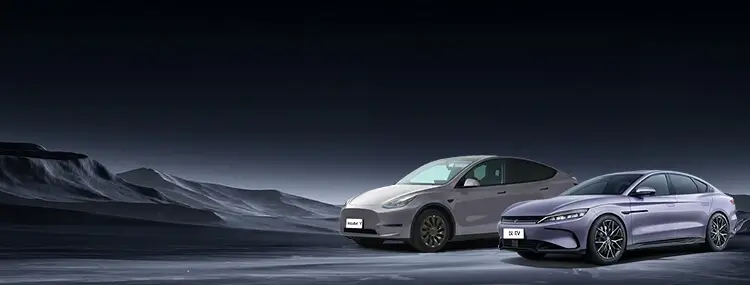As statistics reveal, China has overtaken Japan to become the world's largest automobile exporter. Surprisingly, the single-brand export champion from China is neither Chery nor BYD, but the iconic MG brand. Many consumers may be unaware of this achievement, as the spotlight often shines on the fierce competition within the domestic automotive market. However, MG has maintained its position as the leading brand for five consecutive years, representing a remarkable success story for Chinese automobiles abroad.
The Journey of MG's Exports
MG's export journey began in earnest with China’s entry into the World Trade Organization in 2001, marking over two decades of exploration for domestic car manufacturers in international markets. A significant turning point occurred in 2012, when China’s automotive exports surpassed one million units for the first time. That same year marked the beginning of MG’s successful export strategy, with the brand making its debut in the European market. Over the next 12 years, MG recorded cumulative overseas sales of 2.2 million vehicles, securing its title as China's top single-brand exporter.


In 2023, MG achieved global sales exceeding 840,000 units, with nearly 380,000 sold in developed countries—representing over 50% of its total sales. This milestone signifies MG’s successful entry and sustained presence in developed markets. Currently, MG has expanded its footprint to over 90 countries and regions worldwide. Beyond Europe, it has also made significant inroads in markets like Australia, New Zealand, Mexico, and India, solidifying its reputation as a truly global automotive brand.
Strategies for Success: Catering to Both Domestic and International Markets
The automotive landscape in China differs significantly from that of international markets, particularly in Europe, where consumer expectations are notably stringent. So, how has MG managed to succeed in both arenas?
One key factor is the robust performance of MG’s vehicle lineup. For instance, the MG7 model features advanced 1.5T and 2.0T engines recognized among China’s top ten, coupled with world-class transmissions like the 7DCT and 9AT. Additionally, the new SIGMA architecture provides a low center of gravity, placing MG’s performance capabilities on par with European competitors.
In the electric vehicle sector, MG leverages its technological and supply chain advantages from the Chinese market to enhance product competitiveness. The MG4 EV, built on the "SAIC Star Cloud" platform with a rear-wheel-drive architecture and Magic Cube battery technology, exemplifies this. In 2023, the MG4 EV achieved impressive export sales of 138,700 units, earning titles as the best-selling compact electric vehicle in Europe and the top-selling Chinese electric vehicle abroad.
Furthermore, MG’s product range is continuously evolving. In November 2023, MG launched the MG Cyberster, the world’s first convertible electric sports car, marking a return to the sports car segment after a 20-year hiatus. With an acceleration time of just 3.2 seconds to 100 km/h, it received widespread acclaim at the Beijing Auto Show. MG also unveiled the new EXE181 electric supercar, further diversifying its lineup.
MG's ability to simultaneously thrive in both the gasoline and electric vehicle markets positions it uniquely in the industry. The MG7 caters to traditional car enthusiasts, while the MG Cyberster competes alongside luxury brands like Porsche in the sports car arena. This dual focus on both fuel types allows MG to effectively capture a broad range of consumer preferences.
A Legacy of Understanding Consumer Needs
While many Chinese automotive brands have relatively short histories, MG stands out with a legacy dating back to its establishment in 1924, making this year its 100th anniversary. This rich history is not just a point of pride; it represents a critical milestone in MG's evolution. To commemorate this centennial, MG has launched a series of global celebrations.
Over the past century, MG has experienced both peaks and troughs, ultimately finding revival in the Chinese market and continuing to write its legendary story. Looking ahead, MG aims to grow alongside other Chinese automotive brands, striving for even greater achievements in the global arena.
In conclusion, MG exemplifies how a century-old brand can adapt to modern demands while maintaining its identity. Its success in exporting vehicles globally showcases the strength of Chinese automotive innovation and the capability of domestic brands to compete on the world stage. As MG celebrates its legacy, it continues to pave the way for future developments in the automotive industry.
